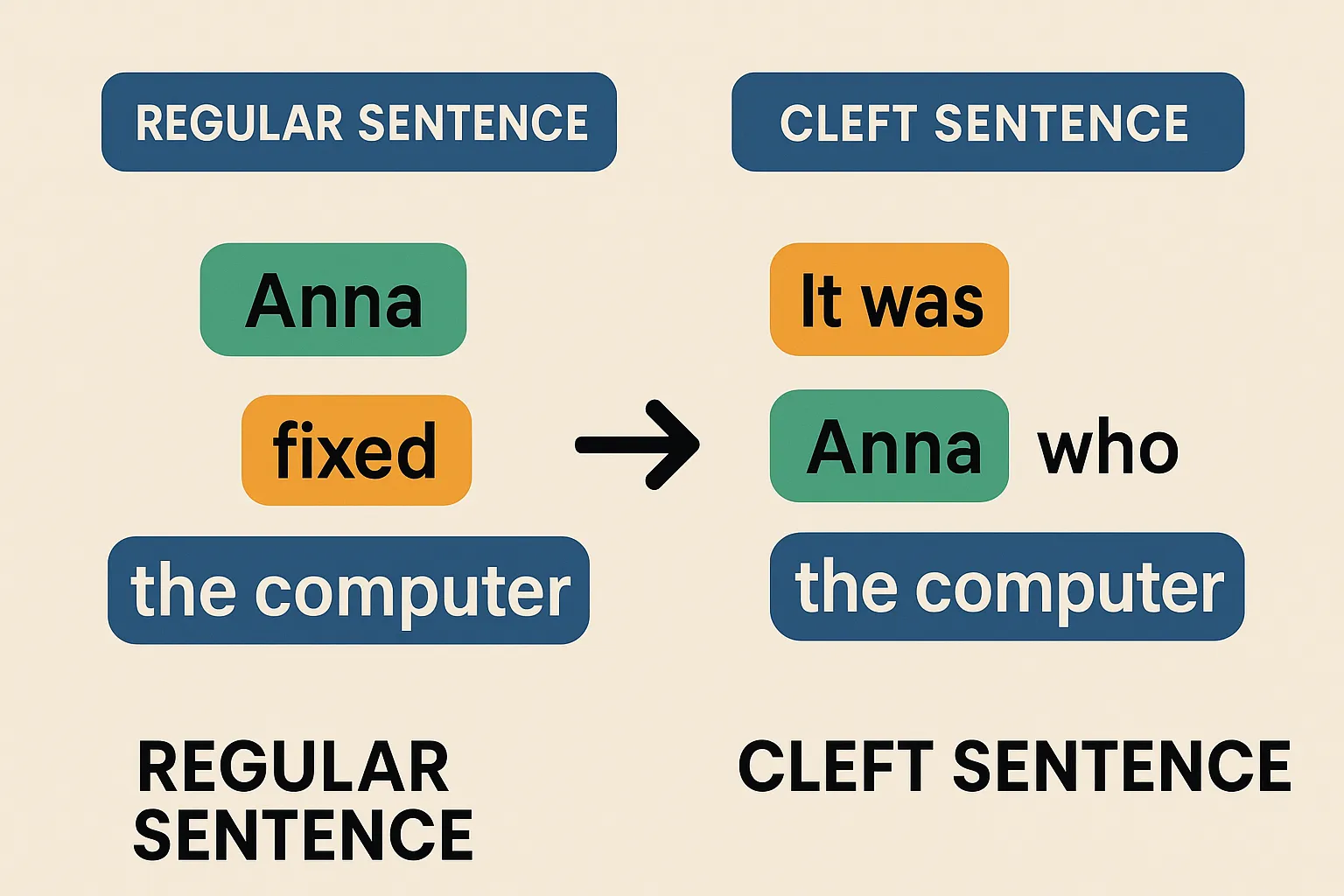Cleft Sentences: Emphasis and Focus in English
Learn how cleft sentences add emphasis and clarity in speech and writing with clear explanations and example structures.

Cleft Sentences: Emphasis and Focus in English
Want to make your English clearer, more expressive, or simply highlight the right information? Cleft sentences—structures like "It was Anna who called" or "What matters is your effort"—can help you add emphasis and organize information for your reader or listener.
What Are Cleft Sentences?
A cleft sentence is a type of sentence structure used to focus attention on a specific part of the sentence. The word "cleft" means "split"; cleft sentences literally split a single idea into two clauses, making it easier to highlight or clarify a particular element (the subject, object, or adverbial information).
Why Use Cleft Sentences?
- Emphasis: Highlight the most important or surprising information.
- Clarity: Manage the flow of information, especially in complex contexts.
- Stylistic Variety: Make writing and speech more engaging and dynamic.
Common Types of Cleft Sentences
| Type | Structure | Example |
|---|---|---|
| It-cleft | It + be + emphasized part + who/that/which + rest | It was John who fixed the car. |
| Wh-cleft (pseudo-cleft) | What/Where/All + clause + be + emphasized part | What I need is time. |
| All-cleft | All + clause + be + emphasized part | All she wants is peace. |
| Other structures | Where/When/Why + clause + be + focused part | Where I live is New York. |
How to Form and Use Cleft Sentences
1. It-Cleft Sentences
- Structure: It + be (was/is, etc.) + focus + who/that/which + rest of sentence
- Example: Simple: John baked the cake.
Cleft: It was John who baked the cake. - Focuses: Subjects, objects, adverbials (time/place/reason)
2. Wh-Cleft (Pseudo-Cleft) Sentences
- Structure: What/Why/Where + clause + be + focus
- Example: Simple: I need a car.
Cleft: What I need is a car.
3. Other Variations
- All-cleft: All I want is an answer.
- Where/When/Why clefts: Where we met was at the library.
Using Cleft Sentences in Speech and Writing
Cleft sentences are common both in spoken and written English. They allow speakers and writers to:
- Correct misunderstandings: It wasn't Sarah who called, it was Paul.
- Answer questions clearly: What we need is cooperation.
- Highlight new or surprising details: It was only after midnight that he arrived.
In writing, they add sophistication and clarity, especially when information might otherwise be confusing or ambiguous.
Tips for Mastering Cleft Sentences
- Use clefts to place important information at the start or end of a sentence, where it gets more attention.
- Don't overuse them. Too many can make writing sound unnatural or repetitive.
- Practice transforming simple sentences into different types of clefts to improve your control and flexibility.
Conclusion: Clarity and Style Through Clefts
Adding variety and emphasis to your English is simple with cleft sentences. By understanding and applying cleft structures, you can pinpoint exactly what matters most—whether in exams, emails, or everyday conversation.